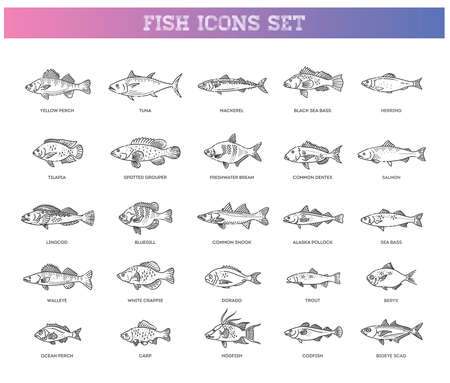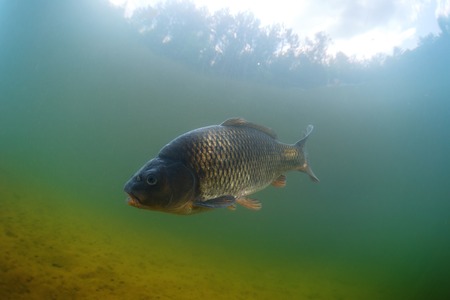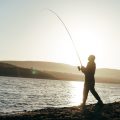1. Origins of Stillwater Carp Fishing in Britain
Carp fishing in Britain has deep roots, tracing back to the medieval period when monks are believed to have first introduced carp into monastery ponds for food. These early introductions set the stage for what would later become a quintessentially British pastime. By the 15th century, carp were being cultivated not just as a staple for the table but also as an intriguing quarry for those with a keen interest in angling. During these formative years, stillwaters—tranquil lakes, estate ponds, and gentle reservoirs—emerged as ideal environments for nurturing robust carp populations. Early British anglers experimented with rudimentary tackle and bait, laying down the traditions that underpin modern carp fishing today. The gradual shift from subsistence to sport saw country gentlemen and working-class enthusiasts alike drawn to the contemplative pursuit of carp amidst the scenic beauty of the English countryside. This blend of practicality and pleasure marked the beginnings of stillwater carp fishing’s enduring appeal across Britain.
Post-War Boom and Cultural Influence
Following the end of World War II, Britain saw a significant shift in its social landscape, which in turn propelled stillwater carp fishing into newfound popularity. The post-war era was marked by increased leisure time, rising disposable incomes, and a collective desire for peaceful outdoor pursuits—qualities perfectly matched by angling on tranquil British lakes and ponds. As returning servicemen sought solace and camaraderie, local angling clubs flourished, and purpose-built fisheries began to spring up across the countryside, transforming the traditional perception of carp fishing from an elite or mysterious pursuit into a widely accessible pastime.
The Rise of Purpose-Built Fisheries
Newly constructed commercial fisheries became social hubs, reflecting broader trends in British leisure culture. These venues catered to both seasoned anglers and novices alike, offering well-stocked waters and comfortable facilities that encouraged longer stays and family outings. The communal spirit fostered at these fisheries not only strengthened local identities but also created a platform for sharing techniques and stories—integral elements of British angling tradition.
Key Drivers of Post-War Carp Fishing Popularity
| Factor | Description |
|---|---|
| Social Change | Greater leisure time and community focus led more Britons to take up angling as a relaxing escape. |
| Economic Growth | Rising incomes enabled investment in tackle, club memberships, and travel to fisheries. |
| Cultural Shifts | A growing emphasis on outdoor recreation aligned with national values of countryside appreciation. |
| Infrastructure Development | Creation of purpose-built fisheries provided accessible venues for all skill levels. |
The British Approach to Leisure Angling
The evolution of stillwater carp fishing during this era mirrored quintessentially British attitudes towards relaxation and nature. Days spent by the water’s edge—rain or shine—became synonymous with rural charm and quiet adventure. Whether enjoying a cuppa with friends or patiently waiting for that elusive bite, post-war anglers shaped carp fishing into a beloved fixture within the fabric of British life.

3. Developments in Tackle and Techniques
British innovation has played a pivotal role in transforming stillwater carp fishing into the sophisticated pursuit we recognise today. In the post-war years, anglers began to experiment with new tackle designs and methods that would revolutionise the sport. The introduction of split-cane rods, followed by lightweight fibreglass and later carbon fibre blanks, provided greater sensitivity and strength, allowing anglers to target larger carp with increased confidence. The invention of the bite alarm in the 1950s was a genuine British contribution, freeing anglers from constant rod watching and paving the way for more relaxed sessions on the bank—a true hallmark of British angling culture.
Bait development also saw remarkable progress. Traditional baits like bread and sweetcorn gradually gave way to more specialised concoctions, with boilies—firm, flavoured dough balls invented by British anglers—becoming the mainstay of modern carp fishing. Coupled with innovative rigs such as the hair rig, another celebrated British creation, these developments dramatically improved hook-up rates while allowing for more selective targeting of specimen carp.
The evolution of tactics has been just as significant. Techniques such as stalking, surface fishing during warm summer evenings, and strategic pre-baiting reflect a uniquely British approach—one that values patience, observation, and an intimate understanding of each venue. Today’s stillwater carp angler benefits from decades of home-grown ingenuity, using specialist pods, custom alarms, purpose-built shelters (bivvies), and a host of accessories designed specifically for the UK’s varied waters. This blend of heritage and innovation ensures that British stillwater carp fishing remains both rooted in tradition and at the cutting edge of modern angling.
4. Trailblazers and Iconic Stillwaters
Britain’s stillwater carp fishing scene owes much to a handful of visionary anglers and legendary fisheries, whose influence has rippled across the globe. These pioneers not only honed their craft on home soil but also shaped the techniques and ethos now synonymous with British carp angling. From the early days, names like Richard Walker—who famously landed the record-breaking 44lb ‘Clarissa’ from Redmire Pool in 1952—sparked a revolution, inspiring generations to chase ever-larger carp using innovative rigs and baits.
The story of British stillwater carp fishing is intimately tied to its iconic waters, each boasting its own atmosphere and folklore. Venues such as Redmire Pool, Savay Lake, and Wraysbury have achieved almost mythical status among anglers. They are as much a part of British cultural heritage as the countryside that surrounds them, with tales of epic battles and elusive giants passed down like treasured local legends.
| Fishery | Location | Notable Captures | Unique Character |
|---|---|---|---|
| Redmire Pool | Herefordshire | ‘Clarissa’ – 44lb (1952) | Picturesque, historic, cradle of British carp fishing |
| Savay Lake | Buckinghamshire | Multiple 40lb+ carp in the 1980s/90s | Mysterious, challenging, known for specimen fish |
| Wraysbury No.1 | Berkshire | The ‘Benson’ era; several famous specimens | Vast, atmospheric, birthplace of modern big-carp tactics |
| Yateley Complex | Hampshire | The legendary ‘Heather the Leather’ carp | Rich syndicate culture, diverse waters, iconic fish |
These venues have fostered a unique camaraderie within Britain’s angling community. Syndicates and clubs have sprung up around them, encouraging shared learning and friendly rivalry—a hallmark of British leisure culture. Today’s trailblazers build on this foundation, pushing boundaries while respecting the traditions that make stillwater carp fishing so distinctly British. The blend of history, innovation, and storytelling ensures Britain remains at the very heart of global carp angling.
5. Social Aspects and Community Spirit
One of the most enduring facets of stillwater carp fishing in Britain is its vibrant social culture, which has blossomed over generations. At the heart of this pastime lies a deep-rooted sense of community, exemplified by the proliferation of angling clubs across the countryside. These clubs are more than just organisations; they are pillars of rural life, fostering friendly competition and nurturing lifelong friendships along the banks of tranquil lakes and ponds.
Bank holidays and weekends often see anglers gathering at their local waters, exchanging stories, sharing tips, and even brewing a communal cup of tea—a true hallmark of British leisure. Friendly matches and club competitions bring an extra element of excitement to the scene, with trophies and bragging rights up for grabs, but always within the spirit of good-humoured rivalry.
This camaraderie stretches beyond the water’s edge. Annual club dinners, charity events, and conservation days unite members in their shared passion for both angling and stewardship of the countryside. For many rural communities, stillwater carp fishing has become a cherished tradition—one that passes from generation to generation, embedding itself firmly within the local way of life.
The ethos here is unmistakably British: fair play, respect for fellow anglers, and an appreciation for the slower pace that comes with hours spent by the water. Whether a novice or a seasoned hand, everyone is welcomed into this inclusive world where the simple joy of fishing is matched only by the warmth of bankside companionship.
6. Present Day Trends and Sustainable Futures
In today’s Britain, stillwater carp fishing is not just a pastime but a reflection of modern values, balancing tradition with environmental consciousness. Catch-and-release practices have become the norm across fisheries, championed both by anglers and fishery owners. This approach ensures that prized specimen carp can grow to impressive sizes and live long lives, while also giving countless anglers the thrill of pursuit without depleting stocks.
Modern Fishery Management
Fishery management has evolved significantly in recent decades. Owners now invest in purpose-built lakes, regular water quality checks, and habitat enhancement to provide ideal conditions for both fish and wildlife. Many venues enforce strict biosecurity measures to prevent the spread of diseases and invasive species—a testament to the sector’s commitment to sustainability.
Community Engagement and Education
The British carp angling community actively promotes education around sustainable practices. Clubs and associations run workshops for newcomers, focusing on fish welfare, proper handling techniques, and conservation ethics. Social media groups foster a culture of respect for the environment, sharing best practices and celebrating responsible angling.
Looking Ahead: A Sustainable Legacy
The future of stillwater carp fishing in Britain looks bright thanks to these collective efforts. There is a growing movement towards using eco-friendly tackle, reducing single-use plastics at waterside venues, and supporting biodiversity projects around fisheries. As a result, carp fishing continues to thrive as a much-loved British tradition—one that seamlessly blends relaxation, skill, and stewardship of the countryside for generations to come.


